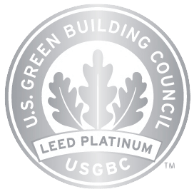The language of paintings, music, sculpture, photography, architecture, and every other art form is universal. Viewers can understand art’s themes on a deep, shared level, regardless of where they come from or what languages they speak.
This is what fuels the power of art and enables it to “speak.” This universal language can produce extraordinary results that help people cross communication barriers and connect with others on a deeper level.
So, just how does the cultural value of art play out in our everyday lives?
It’s not unusual for tourists in NYC to visit some of the world’s most well-known museums, such as MoMa, the Guggenheim, the Whitney, and the Metropolitan Museum of Art. Nestled along Fifth Avenue and bordering Central Park, the Met includes artwork from around the globe, spanning geographical regions and cultures. Visitors to the Met who are unfamiliar with some or all of the works of a given artistic tradition have the opportunity to engage in a cultural exchange that’s largely independent of language.
An appreciation for other cultures allows for the breaking down of social and even political barriers. Accordingly, cultural institutions and attractions that curate art of varying cultures and perspectives in one place give visitors the opportunity to experience new world views, bring their own views to the table, and learn something new about the world — and themselves — without even saying a word. All of this is possible through the power of art.
Because art has the power to capture human emotions, aspirations, and shared experiences, its appeal can transcend the time and distance that separates people and connect with them on a deeply personal level. Just as the panoramic views from SUMMIT offer an unparalleled perspective of NYC, art provides a window into the human experience.
Art’s universality lies in its ability to capture moments and emotions that resonate with every individual, regardless of their personal journeys. The architectural wonders and multisensory experiences of SUMMIT, for example, are a testament to the enduring spirit of human creativity and the need for reflection and wonder.
When you find art exhibitions in New York City or anywhere else, you often want to share it and talk about what it means to you. There’s a motivation to address the subjects it conveys and reveals. In doing so, you may end up in unexpected conversations that challenge preconceived notions and tackle complex issues through a more empathetic lens.
For example, “Sky Mirror,” the famously reflective sculpture designed by Anish Kapoor at Rockefeller Center, has fueled discussions about the role of art in public spaces, the interaction between art and its environment, and the broader cultural, economic, and technical implications of such installations. Kapoor’s sculpture “Cloud Gate” has generated similar reactions in Chicago.
When archeologists uncovered the Terracotta Army in the tomb of China’s first emperor, Qin Shi Huang, the world was captivated. For millennia, thousands of extraordinarily detailed clay warriors had stood guard in one of the world’s most elaborate forms of funerary art. Each warrior possesses unique features that make it possible to form a visceral connection to third-century B.C. China.
The art at SUMMIT does something similar. “Clouds,” Yayoi Kusama’s floor-spanning sculpture of amorphous, mirror-coated shapes, encapsulates her signature artistic themes of infinity and self-reflection and creates an immersive environment of endless space and light. Seamlessly integrated with One Vanderbilt’s architecture, it utilizes the building’s expansive glass and high elevation to enhance visitors’ perceptions of it.
Likewise, Kenzo Digital’s “Air” installation at SUMMIT utilizes mirrors and reflective surfaces to create an illusion of infinite space, further enhancing the immersive experience with panoramic city views. This multisensory New York exhibition employs advanced lighting, sound, and visual effects to evoke a range of emotions, from awe to introspection. Its interactive elements respond to visitors’ movements and make each experience unique.
These make SUMMIT One Vanderbilt another entry in humanity’s long list of language-transcending masterpieces, bringing all of its visitors, regardless of where they come from or when they’re visiting, closer to the notion of infinity. As one of NYC’s most popular international tourist destinations, it hosts thousands of people and hundreds of languages from around the world every year. In its soaring views and wall-to-wall reflections, SUMMIT permits all guests to engage with art and NYC without speaking a word.
Sign up for your SUMMIT visit today to experience the boundary-breaking power of art firsthand.




© 2024 SL Green. Todos os direitos reservados.